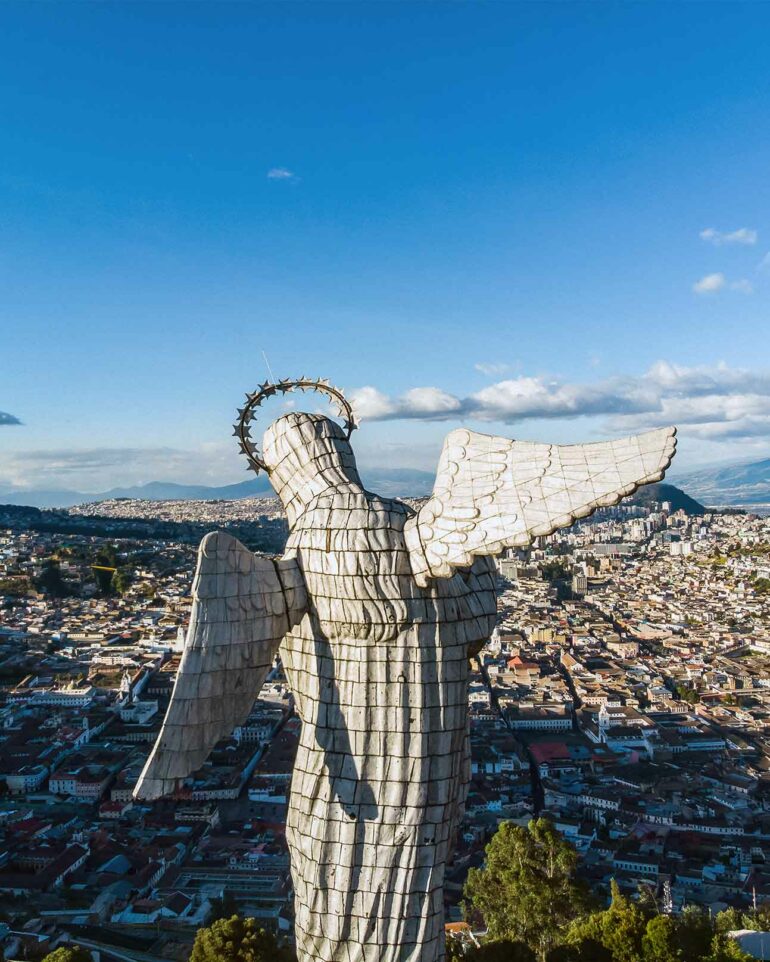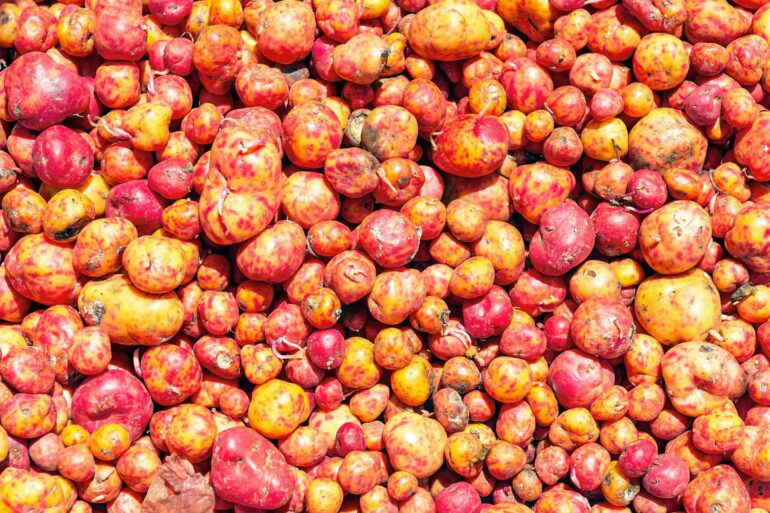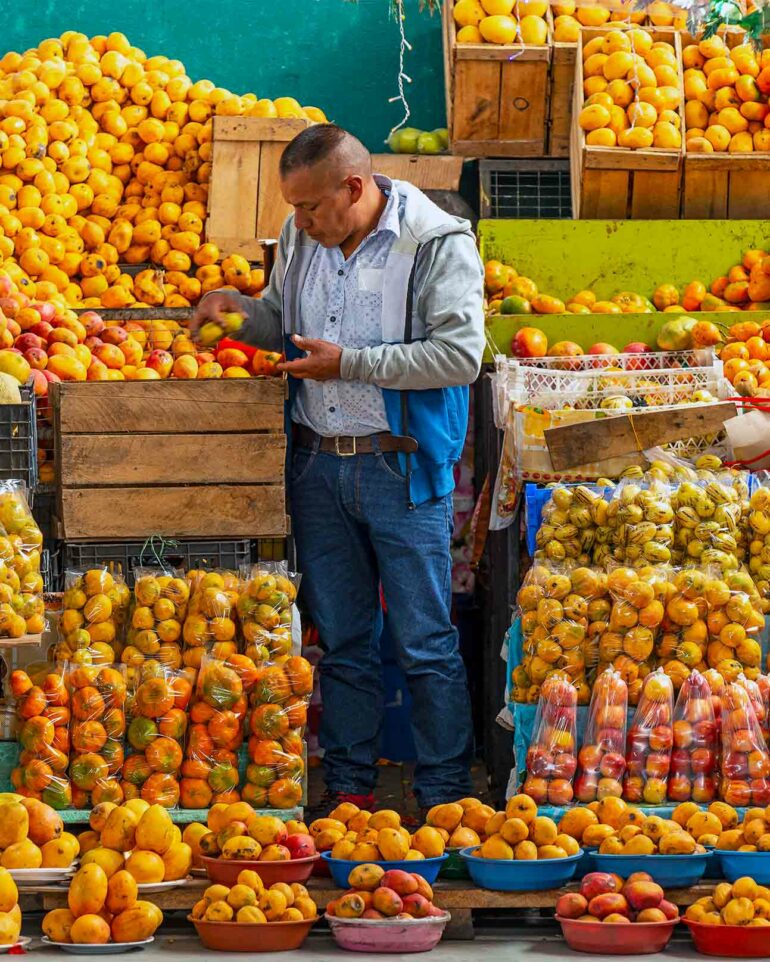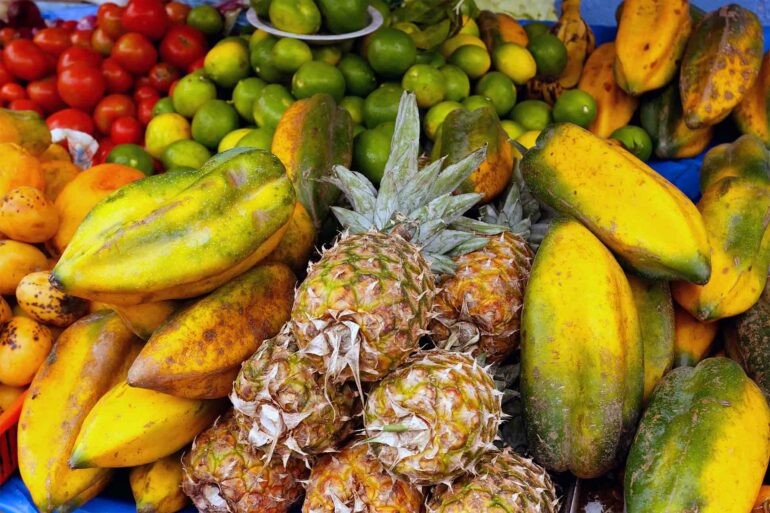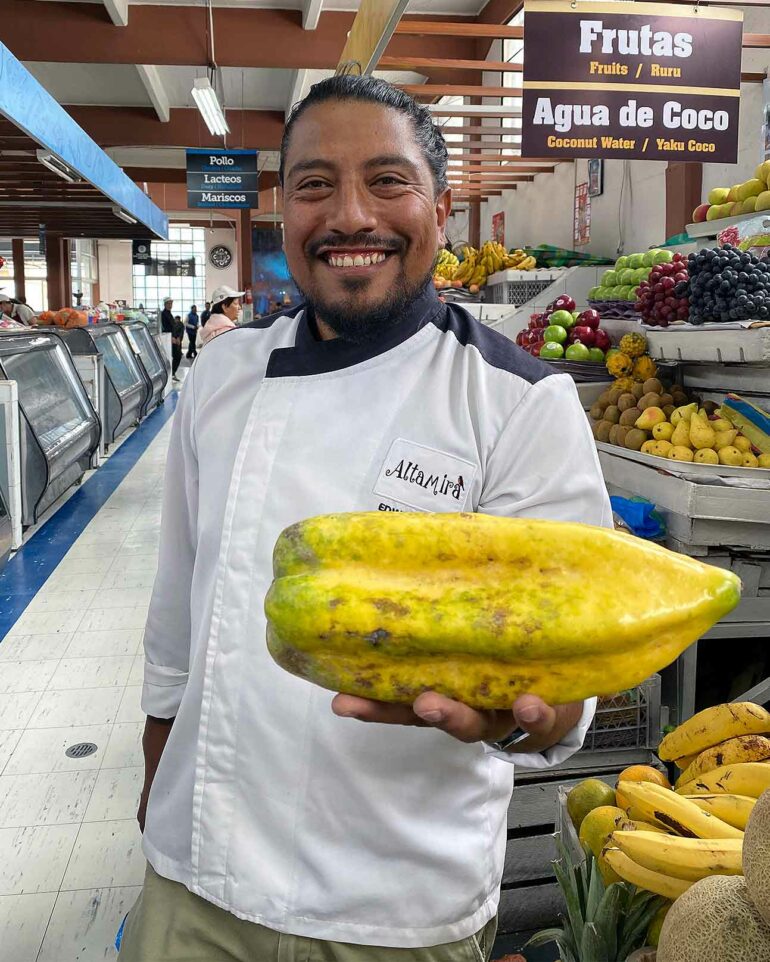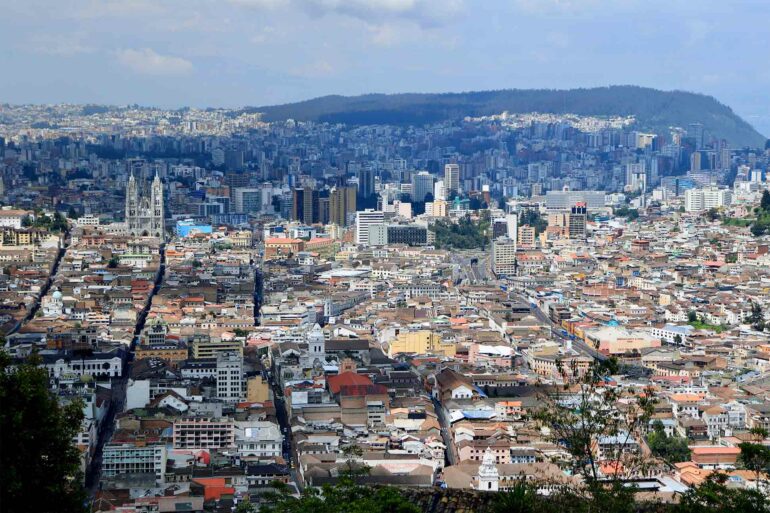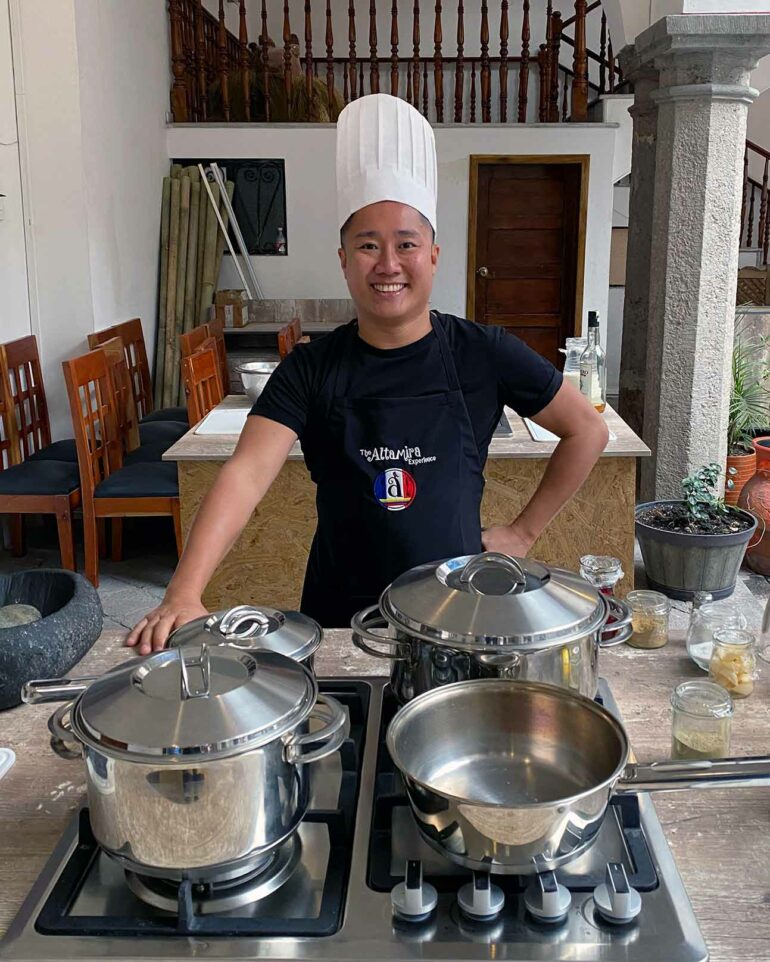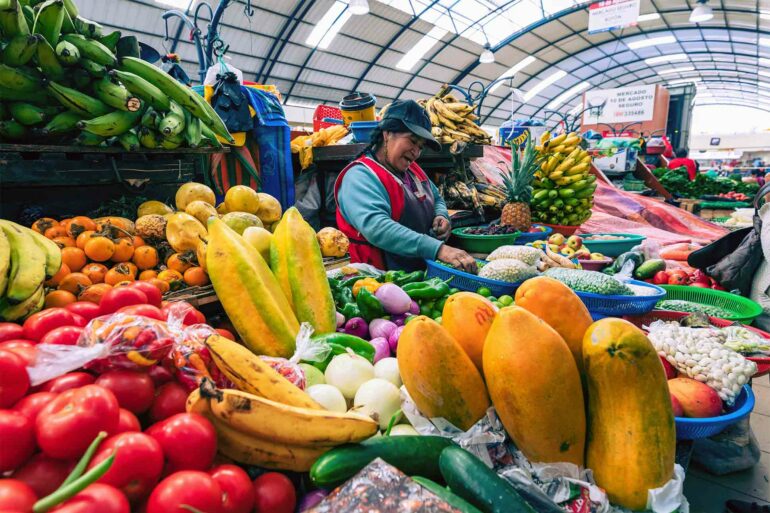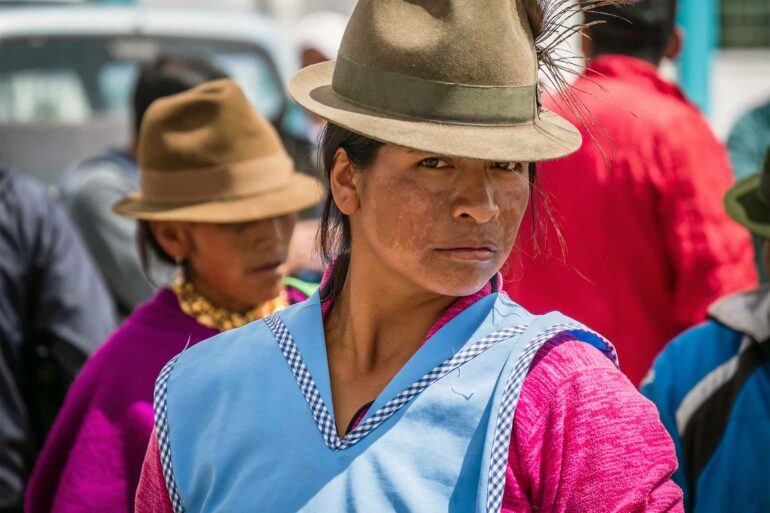Uwern Jong pops his Quito cherry and finds that sizzling street food, curious fruit and tasty dishes from trailblazing chefs are all on the menu in the mountain-high capital.
“Rio de Janeiro in Brazil may have the sugar loaf, but it seems that Quito, Ecuador has the bread roll,” I note to myself, as I stare out at an oddly shaped hill in the distance. I have food on my mind. I laugh out loud when I’m told it is called El Panecillo (the bun). I have to give my eyes (and imagination) more credit sometimes. Little did I know that I was heading there for my initiation – or ‘deflowering’, you could say – as an honourary Quiteño.
Every newcomer’s first stop in the Ecuadorian capital should be ‘the bun’. Perched on top of it is a giant statue of a winged Madonna, made out of aluminium sheets bolted together like the fuselage of an old bomber, the largest sculpture fashioned from the material in the world. It’s only apt that virgins to Quito ingratiate themselves with the Virgin of Quito. You’ll spot her from almost anywhere in the city, her wings spread so her wards can find refuge in faith. She stands on a globe – the world at her feet – with one palm raised in beckoning invitation to those like me, who have come to visit.

This story first appeared in The Experientialist Issue, available in print and digital.
Subscribe today or purchase a back copy via our online shop.
In her shadow, a busker plays ‘El Chulla Quiteño’, a popular local ditty, Ecuador’s version of ‘The Girl from Ipanema’. From way up here – only 200 metres above the city – the view is stupendous and the air pristine. That’s because Quito is already at an elevation of 2,850 metres above sea level. The mountain ranges of the mighty Andes sweep dramatically around me and enormous volcanoes slumber (I’m told some only lightly), snoring and sputtering threateningly from time to time. The pious Quiteños may revere mother Mary who towers above me, but they also pay tribute to mother Earth, Pachamama, praying that another destructive eruption doesn’t come again soon.
As far as my eye I can see, there’s a sprawling, colourful, low-rise city. It has outgrown the Guayllanbamba valley and spills up the side of the surrounding hills. Beyond the built-up area, agriculture abounds. The Andes once carved out an enormous lagoon just north of the capital and the alluvial soil brought into the valley, coupled with frequent volcanic eruptions laying down fertile ash, made it rich for cultivating all manner of produce. There is evidence of farming here dating back to 1,500BC – by a people called the Cotocollao – three millennia before the Incans. The extent of their existence was only discovered relatively recently (they perished “Pompeii-style” after a huge volcanic eruption) when remnants of their time were found during excavations that were part of the municipality’s ambitious plan to build an underground subway.
Much of Ecuador thrives on farming. Although the country mines oil and gold, they’re not of the best quality, so Ecuador is literally a banana republic. The yellow fruit adored by the world drives the economy here, alongside other produce such as cocoa and flowers. Because the city finds itself in one of the most biodiverse regions, there is an endless list of intriguing vegetables, fruit and spices, with discoveries of new varieties ongoing. Agriculture is an art here; and with that, so is the food.
Magical mystery tour
Back in the Old Town, chef Edwin Yambay from the Altamira cooking school is leading me through the cobbled streets. The shops in Quito’s Old Town are zoned: one street will be all about piñatas; the next, baby clothes; another, white goods (I stop to watch as three nuns load a pizza oven on the back of pick-up truck, like something out of an old slapstick comedy). But woven between every shop is an eatery of some kind, a street-food vendor, or someone selling produce off a blanket: ten varieties of passion fruit, pyramids of cassava root and a number of untranslatable vegetables, even for the talented linguist that is Edwin.
We stop numerous times as I get to grips with the basics of Ecuadorian street food. There’s colourful plastic pitchers of jugos – all manner of pulped fresh fruit juice from starfruit to soursop – often mixed into one. A man is stirring up salsa de mani, a sticky, peanut gloop that is served with potato cakes, llapingachos. The nutty fragrance of his fare is overwhelmed by the smell of fried food coming from a crowded restaurant. It’s lunchtime, usually the most elaborate meal of the day. Almuerzo, a set lunch, is on offer and this place specialises in fritada: deep-fried crispy pork, plaintain and whole corn cobs. Just outside, a rather bossy matriarch is mixing up ceviche – with a twist – adding orange juice, scallions and tomato sauce to prawns. She tells me that it’s the perfect remedy for a “chuchaqui,” what Ecuadorians call a hangover; and after a night out at the entertainment district of La Mariscal, it could be just what I need. Should I want something more familiar, she points out her son across the street, who sells the staple of every world culture:
hot-dogs and fries, salchipapas.
Ducking off into a clean, municipal market, we’re faced with aisles upon aisles of colourful fruit. There are tables piled with meat too, heads and entrails all on show. They use innards to make a number of Ecuadorian favourites, guatita and tripa mishqui. Thankfully, there’s a sweet smell wafting through the air. It’s higos pasados, figs cooked in panela-spiced syrup. We’re here to buy produce, as we’ll be cooking our own almuerzo.
At the far end of the market, we meet a woman with a snow-white-powdered face and bright red lipstick. She minds a store stacked full of branches and leaves. Edwin explains that she’s the resident herbalist – revered in local culture – a purveyor of everything from rubs for wounds (a bright red tree-sap they call sangra de drago, or dragon’s blood), to remedies for altitude sickness; to flowers for brewing mind-bending potions.


